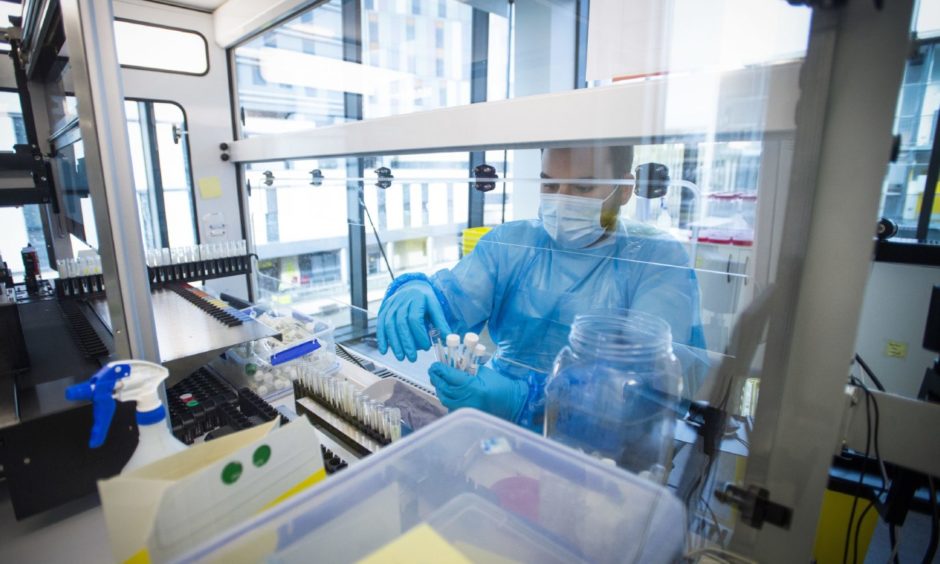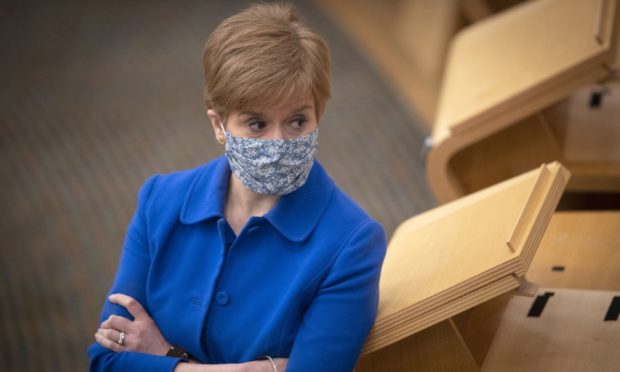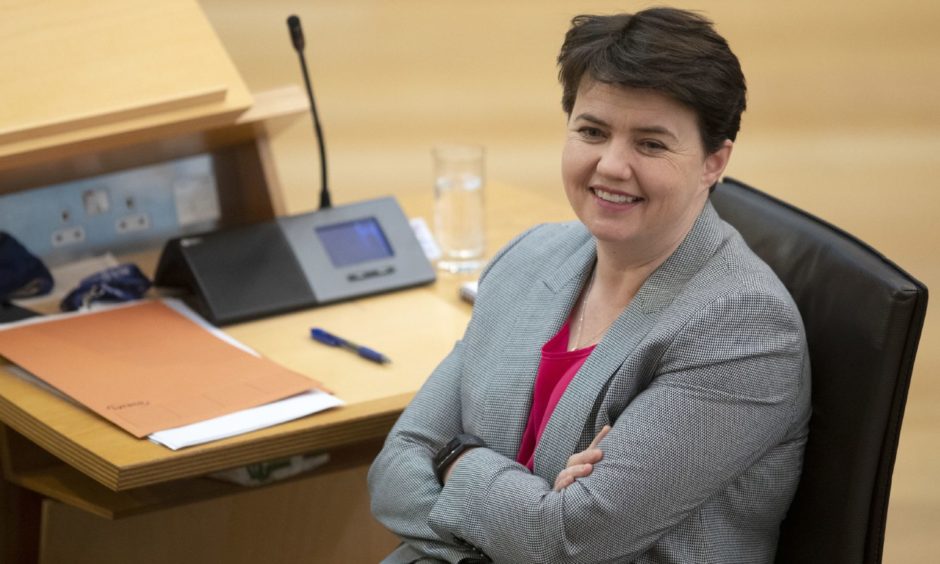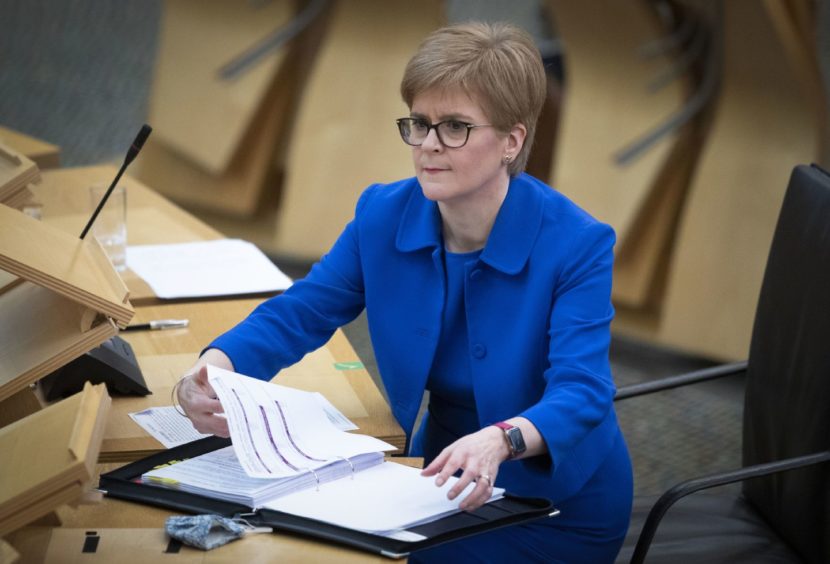Nicola Sturgeon has said it is a concern that coronavirus tracers were unable to contact more than 3,500 Scots who tested positive for the disease but insisted the country’s Test and Protect system was not to blame.
The first minister said the issue had been caused by people not answering phone calls or responding to text messages, rather than the contact tracing system, which she said was performing to an “exceptionally good” standard.
The SNP leader was told during first minister’s questions on Thursday to “get a grip” on Test and Protect after figures showed that since June 22 a total of 3,512 individuals with a positive test were unable to be contacted.
 Public Health Scotland said this was 6% of those who had tested positive, describing it as a “very small proportion” of the overall number of cases.
Public Health Scotland said this was 6% of those who had tested positive, describing it as a “very small proportion” of the overall number of cases.
It has also emerged a “coding error” was responsible for overestimating the number of people contacted within 24 hours of testing positive for the virus, after the system counted everyone reached the following calendar day in this bracket.
The error meant that those tested at 9am on a Thursday would still be counted within the 24-hour window as long as they were contacted before midnight on Friday.
‘Desperately short of resources’
Both Scottish Conservative Holyrood leader Ruth Davidson and Scottish Labour leader Richard Leonard challenged Ms Sturgeon on the blunder.
Mr Leonard said: “The most recent reports from Public Health Scotland show that there have been thousands, 3,500 people, to be precise, who have tested positive but have not been interviewed by Test and Protect, 400 in the past week alone.
“Is the first minister seriously telling Scotland that this shows Test and Protect is working well? Isn’t it showing it is desperately short of resources and that the government needs to get a grip?”
Speaking about confirmed Covid-19 cases who had not been spoken to, Ms Sturgeon accepted “of course that is a concern”.
But she added: “It is simply and factually wrong to describe that as a failure of Test and Protect, of somehow down to a lack of resources.
“Those are people who, despite the best efforts of Test and Protect, don’t answer their phones and don’t reply to the text messages.
“Now all of us have a personal responsibility, you cannot blame Test and Protect if people are not answering their phone to Test and Protect.”
Sturgeon defends text messaging service
The first minister said the latest figures showed the service had contact traced 95.8% of cases within 72 hours – exceeding the World Health Organisation standard of 80%.
However, Ms Davidson said it was wrong of the first minister “not to acknowledge that for eight consecutive weeks at the start of the Covid second wave we were not meeting those targets” and that the issue was not clear because of the data error.
The Tory leader also asked about the use of text messages by the Test and Protect team to reach close contacts of people confirmed as having coronavirus.
Ms Sturgeon said a mix of SMS messages and telephone calls is deployed, and that texts are used for “speed”. She said around 40% of close contacts are telephoned.
The first minister told MSPs the proportion of people contacted by phone rather than text is expected to increase, adding ministers will “seek to improve the system”.
She said: “It doesn’t do anybody any service – and by anybody I don’t mean the government, I mean the people of Scotland – to suggest anything other than Test and Protect is working well and people should have confidence in it.”
A further 45 deaths from coronavirus in Scotland were recorded into Thursday, with 1,212 new cases taking the total to 77,660.
National progress masks regional concerns
Ms Sturgeon said national progress on curbing the rising transmission rate of Covid-19 had masked regional concerns.
Delivering an update to the Scottish Parliament before first minister’s questions got under way, she said the latest statistics “mask some very significant regional variations”, including stabilisation at a “stubbornly high level” in the central belt.
The SNP leader said existing measures were having an effect and highlighted the R number, which measures how many people on average are infected by a single positive case, is “hovering around one and may actually be slightly below one”.
She said: “We are concerned firstly about local authorities where transmission is rising again, albeit from a relatively low base, and that includes some areas in level one and two where restrictions are not as tight and the virus does have some opportunities to spread.
“To the people in these lower-level areas, please, don’t drop your guard. You must still take care and abide by the rules.”
Ms Sturgeon said officials were also worried about some areas “where case numbers have stabilised but they have stabilised at a stubbornly high level”.
“That creates a risk for the winter period and it also makes the risk associated with the Christmas period higher as well ,” she said. “So we will be considering carefully over the next few days and assessing whether further action is required.”



